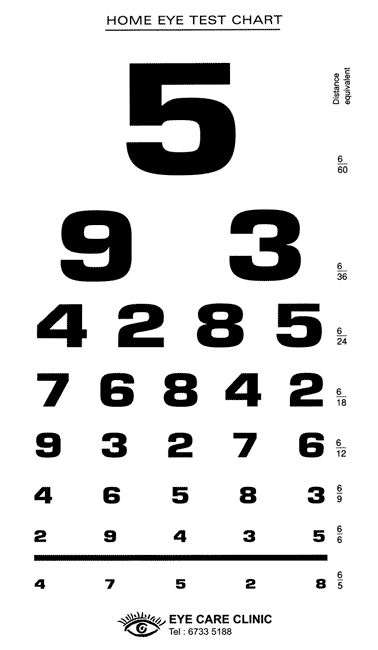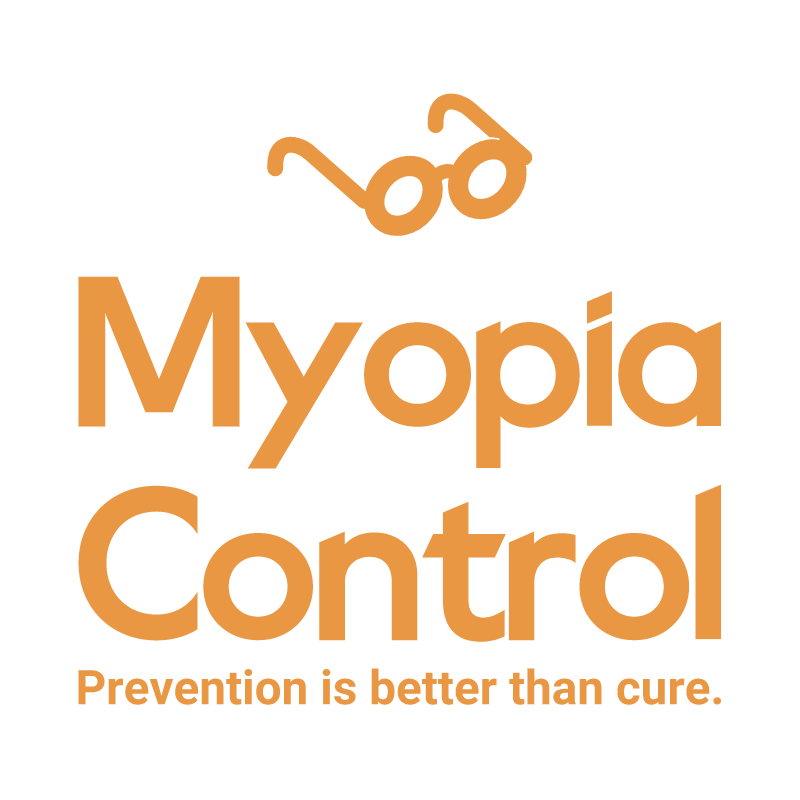This test, also known as the Visual Acuity Test, tests the sharpness of vision by grading the ability of the eye to discern diminishing sizes of alphabets, numbers or shapes at a specified distance of 6 metres.
Instructions :
- The test chart can be found below. Measure the height of the biggest number (i.e. 5) in centimeters.
- Multiply the height by 0.72. (example: if the height of the biggest no. 5 is 4.2cm, take 4.2 x 0.72 = 3.02 meters. This means you should stand 3 meters away when testing your vision.
- Stand at the calculated distance from the monitor and read down to the smallest row of numbers that you can see.
- Test one eye at a time, first without your glasses and then with. Keep your other eye covered using an eye patch. To make a simple eye patch, just fold a piece of tissue paper, and tape it over your eye.
- Your visual acuity is given as a fraction (i.e. 6/60, 6/36, 6/24, 6/18, 6/12, 6/9, 6/6, or 6/5) designated to the smallest row of numbers you can read correctly.
- First test your right eye, then your left eye. Record your visual acuity without (unaided visual acuity) and with your glasses (aided visual acuity).


Interpreting The Results
Normal good visual acuity is 6/6. If your visual acuity is worse than 6/6, move on to the next test, the Pin Hole Test. The Pin Hole Test will determine whether you need to wear corrective glasses to see better.
More Information On The Distance Vision Test
- Visual acuity results are designated by fractions e.g. 6/60, 6/30, 6/24, 6/18, 6/12, 6/9, 6/6, 6/5. What do these fractions mean?
- When we say that an eye has 6/24 visual acuity, we mean to say that the smallest row of letters the tested eye can discern at a distance of 6 metres is what a normal eye can discern at a greater distance of 24 metres. From this, we can see that the numerator 6 is a constant. The denominator varies and a number greater than 6 would represent less than normal visual acuity. The larger the denominator number, the poorer is the vision.
- 6/6 visual acuity is normal vision. 6/5 represents the fortunate 10 percent of the population that has better than normal vision.
- The legal visual requirement to obtain a driving license is 6/12 in most countries. A person seeing worse than 6/60 despite best spectacle correction is considered to be legally blind. About 10 percent of people are fortunate to have better than 6/6 vision, that is 6/5.
- The test is ideally done at 6 metres because light rays from objects seen at 6 metres and beyond reaches the eye as parallel rays and in the NORMAL EYE are focused precisely onto the central macula region of the retina without the need for any focusing effort.
- In some countries, normal visual acuity is designated as 20/20 which simply is the same measurement designated in feet. In other countries, the fraction is converted to a decimal figure but they mean the same thing

